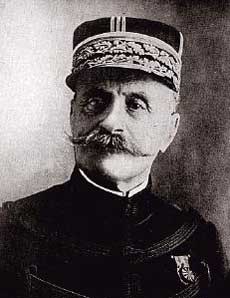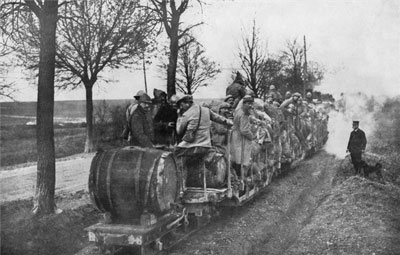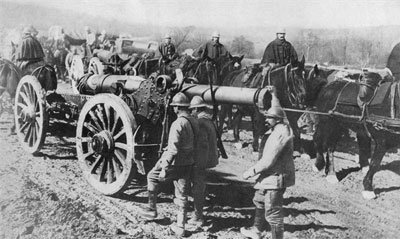
WWII: Maginot Line | Normandy | V-Weapon Sites | Arnhem
Further afield: Crete
| Home Tracing Military Ancestors Travel Advice CWGC Cemeteries Iron Harvest News Book Reviews Glossary Links Contact Me Verdun:
 
|
Enter PétainWith Douaumont captured, some, including the Central Army commander De Langle de Cary, proposed the evacuation of Verdun and all forces pulling back to the left (west) bank of the Meuse. The man who put a halt to the talk of retreat was Joffre's Chief of Staff, General Noel de Castelnau. He got agreement from Joffre to bring up General Henri Philippe Pétain's Second Army from general reserve to hold the right bank.
Pétain's appointment to defend Verdun was a classic case of "cometh the hour, cometh the man". Foremost amongst his many attributes was the fact that he understood the power of modern artillery and its ascendancy on the battlefield. Grouping his artillery into larger formations, he sited them so as to provide maximum advantage over the German attackers. He also ordered work on a new defensive zone linking the remaining forts in French hands, which were rearmed and re-garrisoned. Finally, he organised the improvement of a new supply route into Verdun to replace the rail link from Châlons, which had been severed by German fire. This formerly minor road which ran south from the city to Bar-le-Duc, became known as the Voie Sacrée or "Sacred Way". With vehicles moving up and down it day and night it became the city's vital lifeline, without which the flow of reinforcements and material needed to halt the Germans on the right bank would dry up and Verdun would surely fall.
Falkenhayn now had what he wanted. The French were locked into a battle of attrition and appeared to have fallen into his trap. However, as so often happened in the First World War, the advantage was beginning to pass out of the attacker's hands. The problem stemmed from the fact that, as German troops and artillery moved forward on the right bank, they increasingly revealed themselves to the flanking fire of French batteries on the left bank behind Le Mort Homme (The Dead Man) and Bois Bourrus ridges. The Crown Prince and his chief of staff, von Knobelsdorf, persuaded Falkenhayn to launch a further attack on the left bank to negate these batteries.
|


